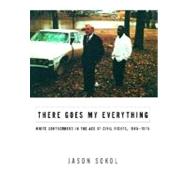
Jason Sokol grew up in Springfield, Massachusetts, and attended Oberlin College and the University of California, Berkeley, where he received his doctorate in American history. He lives in Brooklyn, New York, and teaches at New York University.
| Introduction: Change Seeps In | 3 | (16) | |||
|
19 | (37) | |||
|
56 | (58) | |||
|
114 | (68) | |||
|
182 | (56) | |||
|
238 | (71) | |||
|
309 | (50) | |||
| Notes | 359 | (34) | |||
| Selected Bibliography | 393 | (12) | |||
| Acknowledgments | 405 | (2) | |||
| Index | 407 |
The New copy of this book will include any supplemental materials advertised. Please check the title of the book to determine if it should include any access cards, study guides, lab manuals, CDs, etc.
The Used, Rental and eBook copies of this book are not guaranteed to include any supplemental materials. Typically, only the book itself is included. This is true even if the title states it includes any access cards, study guides, lab manuals, CDs, etc.
Excerpted from There Goes My Everything: White Southerners in the Age of Civil Rights, 1945-1975 by Jason Sokol
All rights reserved by the original copyright owners. Excerpts are provided for display purposes only and may not be reproduced, reprinted or distributed without the written permission of the publisher.